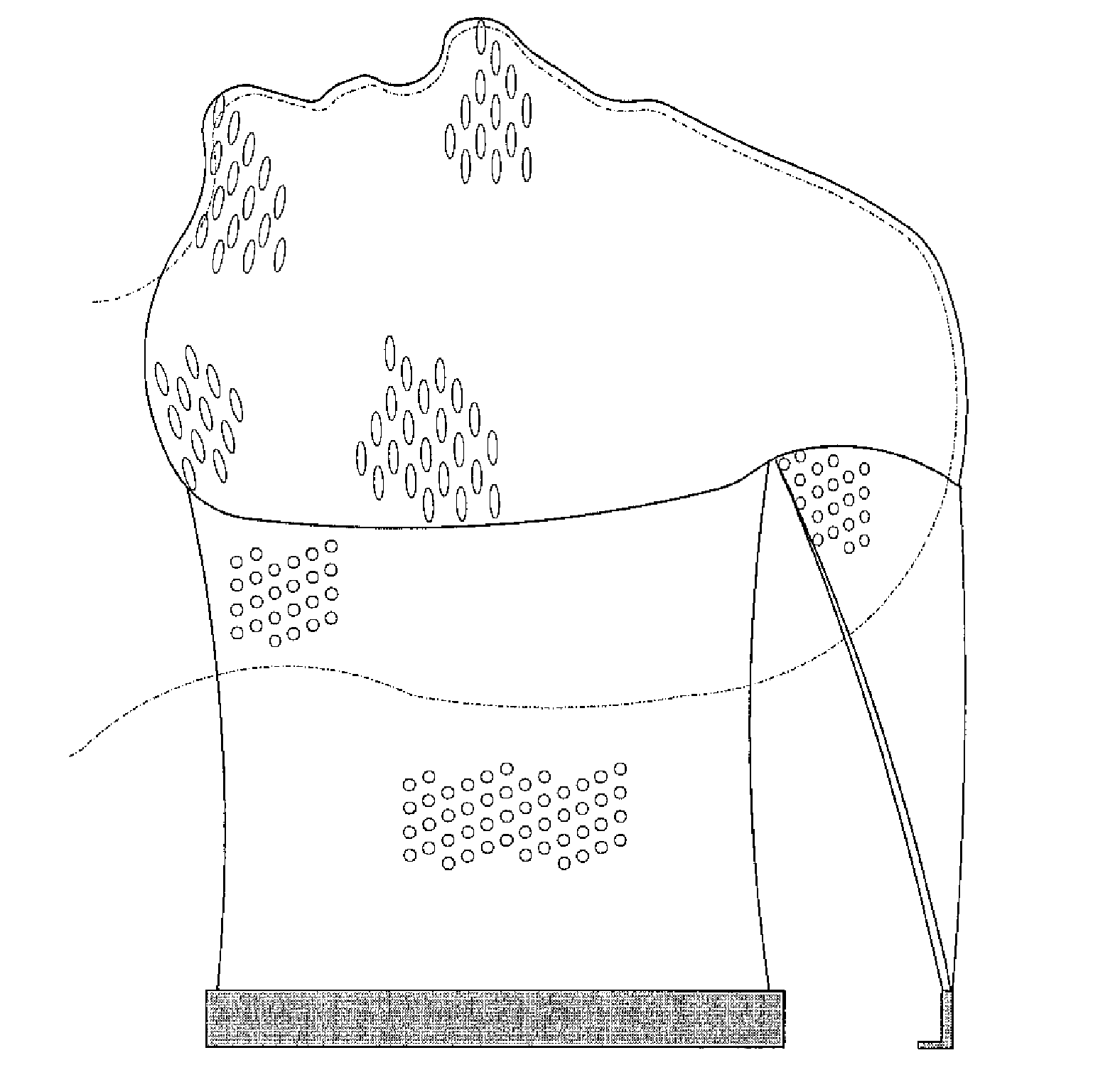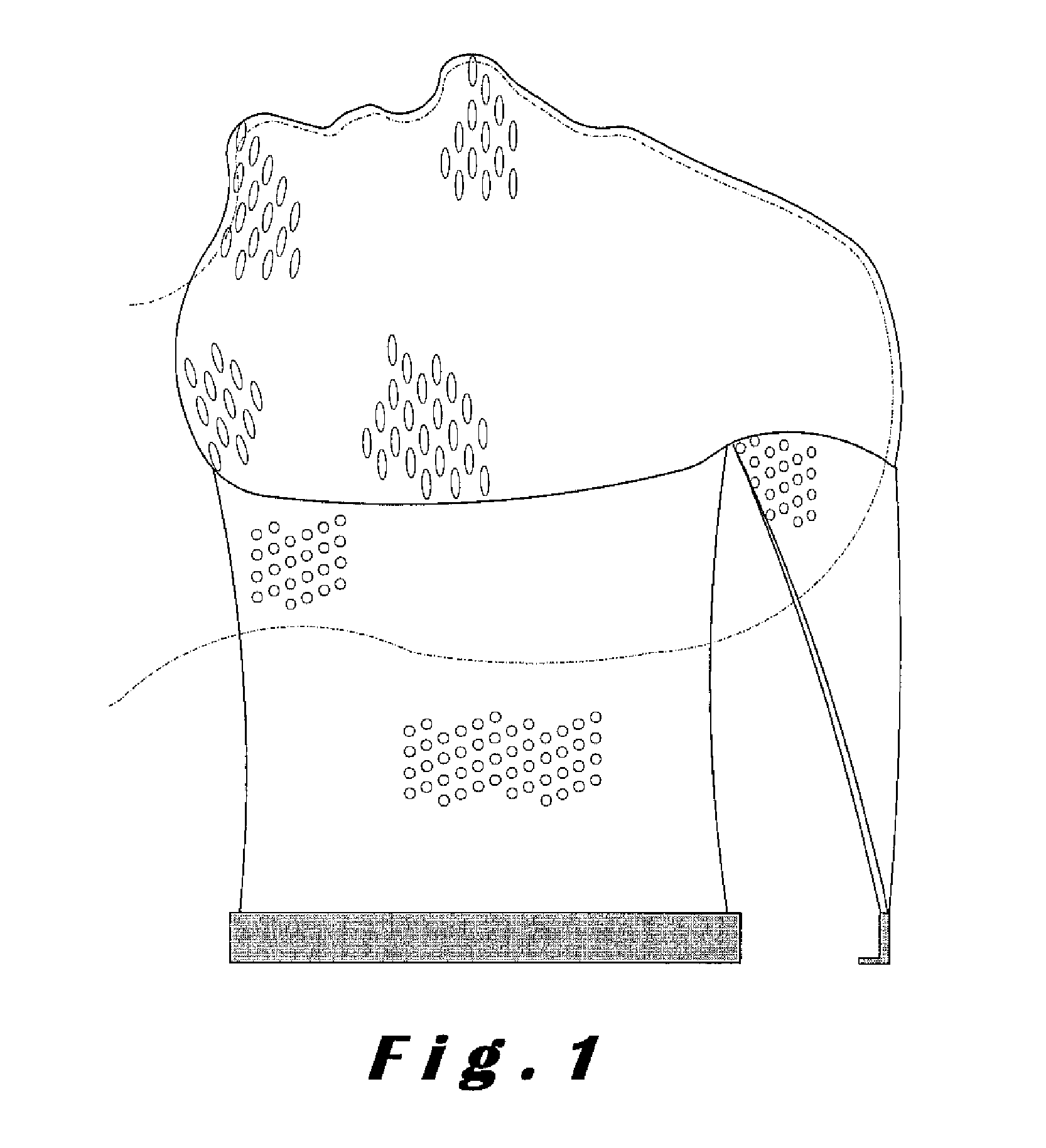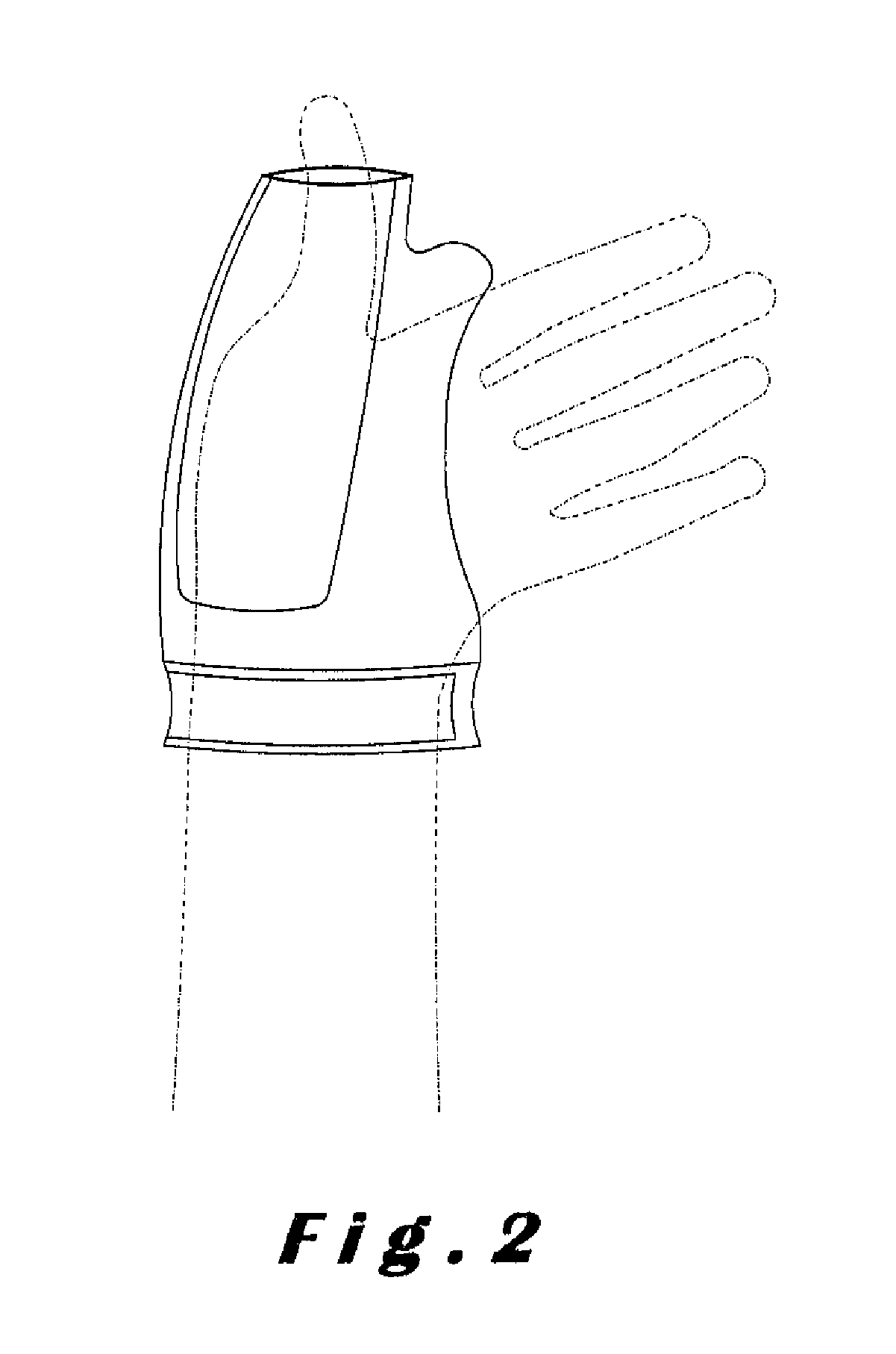Immobilization device
a technology of immobilization device and flexural modulus, which is applied in the direction of restraining device, paris bandage plaster, transportation and packaging, etc. it can solve the problems of reducing the rigidity of the material and the stability of the device, the thermoplastics shrink upon crystallization, and the immobilisation condition is difficult to move the body parts, etc., to achieve the effect of improving mechanical properties, reducing the flexural modulus, and prolonging the time for molding
- Summary
- Abstract
- Description
- Claims
- Application Information
AI Technical Summary
Benefits of technology
Problems solved by technology
Method used
Image
Examples
example 1
[0059]A composite material was produced by mixing from 0.25 to 2.5 wt. % of carbon nanotubes as indicated in table 1 below into ε-polycaprolactone Capa obtained from Perstorp UK Ltd. The following types of carbon nanotubes were used: Baytubes obtained from Bayer Material Science, and Graphistrenght obtained from Akema. Mixing was accomplished using a batch-operated lab-scale twin-screw DSM Micro Compounder (15 cc, N2 purge, screw rotation speed 170 rpm), with an extruder residence time of 30 minutes. The thus obtained composite material was compression moulded into a sheet at 140° C., 100 bar pressure, using an Agila PE30 hydraulic press.
[0060]To assess electro conductivity, 4-point conductivity measurements were performed on the surface of the nanocomposite sheet, using a Keithley 6512 programmable Electrometer (current range 1.1×10−6-1.1×10−2; voltage range 10−4-100 V). A colloidal graphite paste provided by Electron Microscopy Science was employed to ensure proper contact between...
example 2
[0062]A composite material was produced by mixing 5 wt. % of each of the nanofillers given in table 2, into ε-polycaprolactone obtained from Perstorp. Mixing was accomplished using a lab-scale twin-screw compounder type ZSK-18 (Coperion). Such obtained composite material was compression molded into a sheet at 140° C., 100 bar pressure, using an Agila PE30 hydraulic press.
[0063]The secant or flexural modulus was measured using a 3-point bending mode, 90 mm span, 4 mm deflection at 21° C., using a Lloyd Instruments LRX Plus apparatus. An average of three measurements was taken for each sample, measurements were performed 7 days after the composite materials had been compression moulded as described in example 1, and stored at 21° C. The sample dimensions were 130×30×1.6 mm.
[0064]
Nano material (5 wt. %)Flexural Modulus (MPa)ε-polycaprolactone500Bentone DE560Nanofil SE310900Cloisite Na+900
example 3
[0065]A composite material was produced by mixing respectively 3 and 10 wt. % of Nanofil SE3010 and Cloisite 10A, into ε-polycaprolactone Capa obtained from Perstorp UK Ltd. Mixing was accomplished using a batch-operated lab-scale twin-screw DSM Xplore Micro Compounder (15 cc, N2 purge, screw rotation speed 170 rpm), with an extruder residence time of 30 minutes. The thus obtained composite material was compression moulded into a sheet at 140° C., 100 bar pressure, using an Agila PE30 hydraulic press.
[0066]The secant modulus was measured using a 3-point bending mode, 90 mm span, 4 mm deflection at 21° C., using a Lloyd Instruments LRX Plus apparatus. An average of three measurements was taken for each sample, measurements were performed 7 days after the composite materials had been compression moulded as described in example 1, and stored at 21° C. The sample dimensions were 130×30×1.6 mm. The results are summarized in table 3.
[0067]
TABLE 3Nano material (wt. %)Flexural Modulus (MPa)...
PUM
| Property | Measurement | Unit |
|---|---|---|
| flexural modulus | aaaaa | aaaaa |
| thickness | aaaaa | aaaaa |
| thickness | aaaaa | aaaaa |
Abstract
Description
Claims
Application Information
 Login to View More
Login to View More - R&D
- Intellectual Property
- Life Sciences
- Materials
- Tech Scout
- Unparalleled Data Quality
- Higher Quality Content
- 60% Fewer Hallucinations
Browse by: Latest US Patents, China's latest patents, Technical Efficacy Thesaurus, Application Domain, Technology Topic, Popular Technical Reports.
© 2025 PatSnap. All rights reserved.Legal|Privacy policy|Modern Slavery Act Transparency Statement|Sitemap|About US| Contact US: help@patsnap.com



